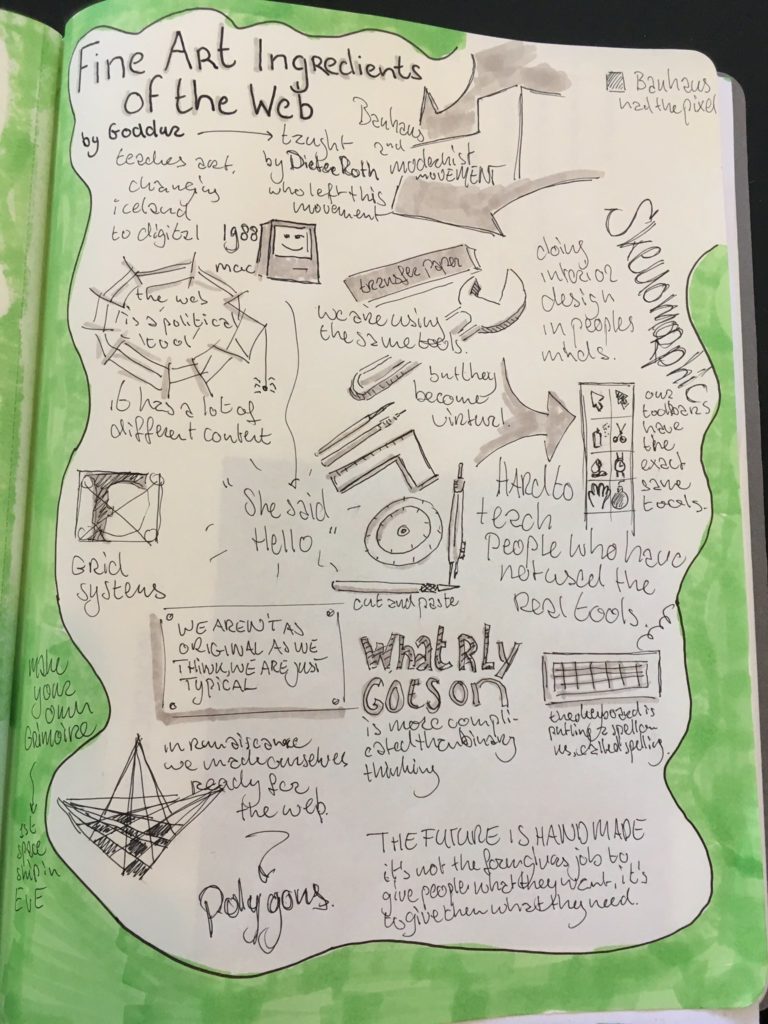The context of ideas from classical art such as the vanishing point and the perspective of the renaissance to the pixels of Mondrian and Kazimir Malevich. The devices and the tools that the creators of the web have permanently at hand.
Goddur, works as a graphic design professor at the Icelandic Academy of the Arts in Reykjavík and is without a doubt Iceland’s best-known commentator on design issues.
He teaches mostly theory courses and will be discussing the history of technology and design with examples of perspective tessellations and other patterns. He’s been working in design since before the first Macintosh computers and has grown and learned with the technology.

Because …
We’ve known Goddur for a while. He’s a regular name around Iceland and we wanted to introduce some of our international crowd to some of his opinions. We knew he’d be opinionated and not say exactly what everyone was expecting or would want to hear, but sometimes that’s a good thing. While, we don’t always agree with him, he is coming to the solution via years and years of his experience, so it is never an off-the-hip opinionated response.
His background is certainly in more the physical material medium, but was also a very early adopter of digital. His view of digital and what digital can do is certainly influenced by his years of working analog.
Goddur ➞ Web
Goddur talks about ideas, tools and getting dirt under your fingernails. He talks about how the post-modernists rejected art ladened with meaning and strived for that neutral framework. That’s how we got things like Helvetica and strict grid designs. Then those who started it began to reject it because this style was becoming too connected with meaning itself. We hear a similar complaint about the Web. In trying to get a basic minimal framework which will work on desktop and mobile devices, people are turning to quick solutions and every site is beginning to look the same and be boring and bloated.
To understand the future, you need to sometimes look at the past. This talk is a great starting point for one of the ways that we go to where we are today!
You can view all the video recordings and subscribe to the Material podcast on the Material Archive site.